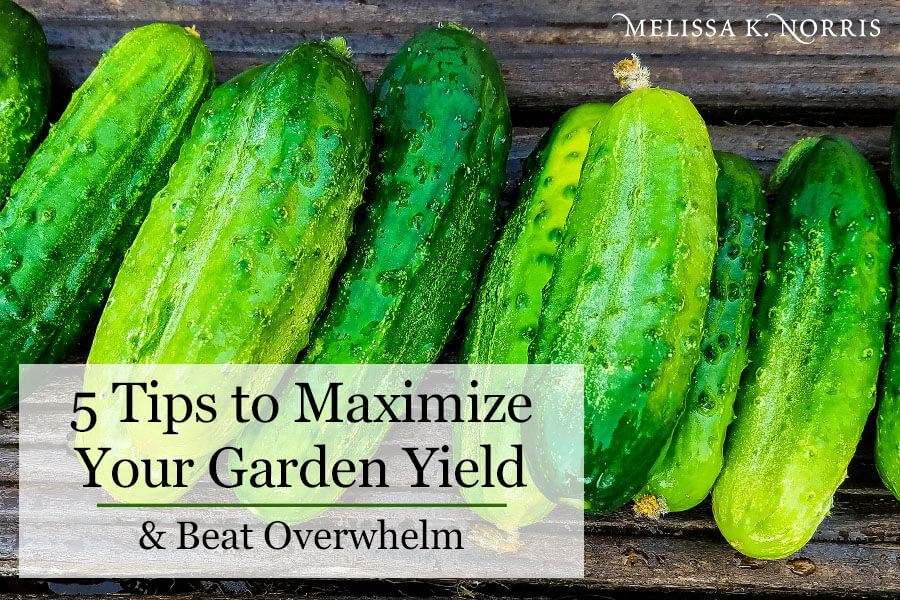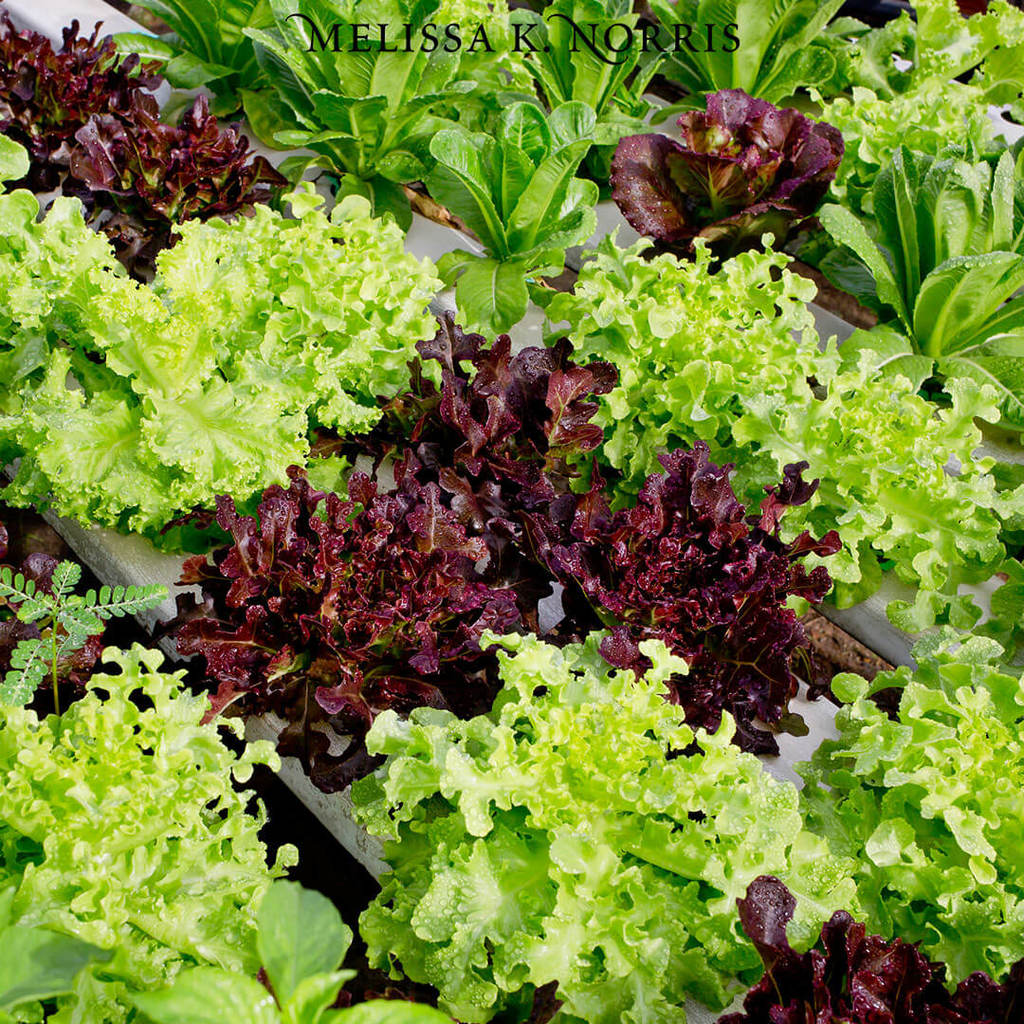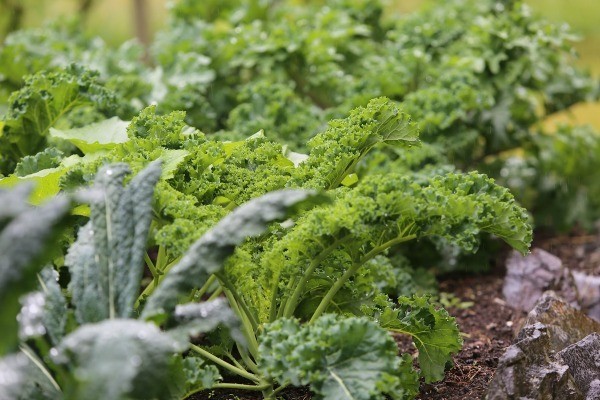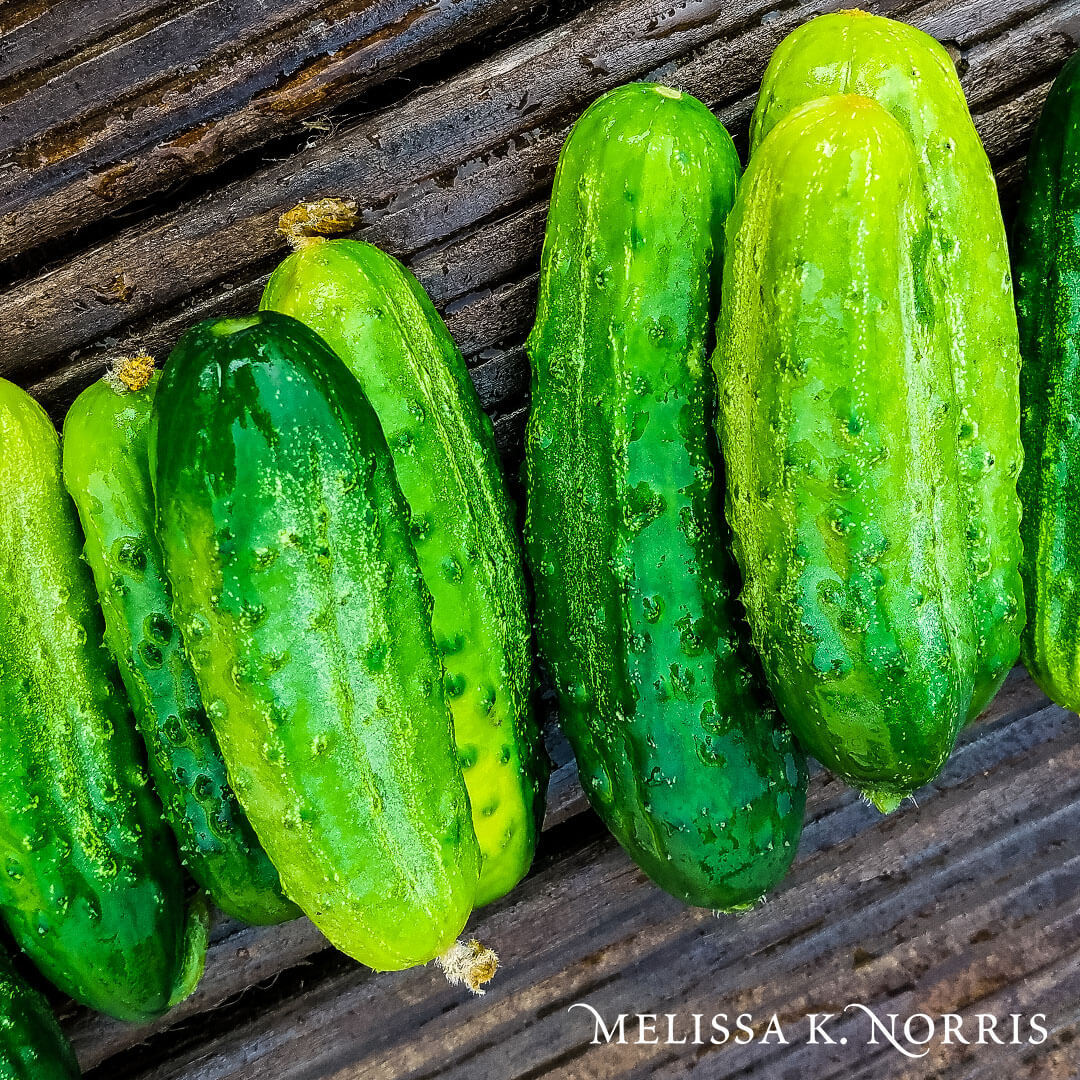Maximize your garden yield and beat overwhelm, almost sounds too good to be true, huh?
When it comes to gardening, it can be really easy to fall behind and feel overwhelmed with everything that needs to be done, or even to miss important windows for planting certain crops or fertilizing for maximum production. And then there are the weeds… Those babies can get out of control real quick if you’re not diligent.

The good news is, there are a few key things you can do now to help you stay on top of everything throughout the season. So today I’m going to be giving you my game plan for effectively managing the gardening season and growing more food without the overwhelm. Can I get an amen?
Listen to the full podcast, Episode #181 5 Tips to Maximize Your Garden Yield & Beat Overwhelm, of the Pioneering Today Podcast, where we don’t just inspire you, but give you the clear steps to create the homegrown garden, pantry, kitchen and life you want for your family and homestead.
Table of Contents[Hide][Show]
5 Tips to Maximize Your Garden Yield & Beat Overwhelm
Now, one of our big goals in the garden is to really maximize our production of fruits and vegetables and herbs and all those things that are going to feed us and sustain us over the summer and even into the winter. So we really want to be doing everything we can to maximize production off of the plants we have and these vegetable garden tips will help. One of the things that is super important to get good production, especially from container plants, is to use fertilizer.
Tip #1: Fertilize plants for higher yields
Now, this may also pertain to your raised beds or even your in-ground annual vegetable garden, especially if you didn’t amend your soil or you need to give them some additional nutrition throughout the growing season.
But with your container plants specifically, you’re going to want to fertilize in order to add nutrients to the soil in your containers.
You want to make sure that you have some good organic fertilizer on hand to use throughout the gardening season. I use an organic fish concentrate for my container plants. But no matter what type of fertilizer you use, you’ll want to read the bottle and go by the recommended concentration per square footage or per the type of plant that you are feeding. Then you mix that in a container and fill the rest up with water. I have a two gallon water jug that I use and then I water my container plants with that.
Now, when it comes to fertilizing the garden, we do use our own homemade compost and that’s a great fertilizer for amending your soil in the fall. But I find that there’s just not enough nitrogen and other nutrients in that compost to take it through the entire season and to get good growth and a good harvest off of those container plants.
So when I’m fertilizing my containers during the main part of the growing season, I apply it ideally every two to three weeks or so. I kind of let the plants tell me what they need. I look at the way they’re growing. If they’re slowing down, if leaves are getting pale or maybe a little bit yellow, then I know that I shouldn’t wait and I should fertilize every two weeks. But usually once every two to three weeks, sometimes every four weeks if time gets away from me.
My suggestion is to put it on your calendar so you don’t forget. Either write it on your calendar on a specific date every two or three weeks or if you use the calendar on your phone you can put “fertilize plants” in there as a reoccurring event every two or three weeks and then it will pop up as a reminder. This way you won’t forget it so you won’t miss it.
That’s why I said have that fertilizer concentrate on hand already, so when it’s time to fertilize, you’ve got what you need and don’t need to make a trip to the store. If you’ve got what you need on hand you can get it done in less than 10 minutes.
Now with perennial container plants specifically, (think herbs and things like that), you’ll want to stop fertilizing those about four weeks before your first average hard (killing) frost date in the fall. This is because you don’t want your plant to keep sending out tender new growth at this time, and using fertilizer encourages that growth.
Because you want to keep your perennials strong and healthy year after year, you want to discourage new growth at this time of year so that when that first frost hits, it doesn’t damage that tender new growth when you’re focused on hardening off the plant for those colder temperatures. So I stop fertilizing about a month before I know we’re going to get our first average frost date for perennials.
This doesn’t matter when it comes to annuals. Go ahead and fertilize those bad boys right up until the first frost because that first frost is going to kill them no matter what, so you may as well get as much from that plant in one year as possible.
If you have annuals and perennials mixed in the same container, (say you have your perennial herbs like rosemary and thyme with your annual basil plants) then fertilize as if they are all perennials. This will help your perennials to last for years and years.
Tip #2: Mark important dates on your calendar
Just like you should schedule out your fertilizing days on your calendar so you don’t forget, I want you to schedule out your succession planting dates too. A little further down I will talk about scheduling a little time for weeding as well, so there’s definitely a common theme here when it comes to scheduling important dates.
Life is busy, and I’ve found that if I schedule things out ahead of time then I’m a lot less likely to miss the dates or to miss doing it. In the past, I’ve missed a lot of things or been irritated with myself because I waited too late and missed my planting window for that growing season. That’s why I’m stressing the importance of scheduling things out.

So schedule out your succession planting, along with your fertilizing (and your weeding too!)
Tip #3: Succession plant to maximize food production
On the topic of succession planting, if you’re not familiar with this term, succession planting simply means planting things one after another in the garden so that you have a continual harvest of a particular crop all season long. This is what I do with smaller crops that I want to eat fresh all season long and that don’t preserve well. So things like lettuce and spinach or other fresh greens, or even fall crops that need to go in after some of the summer annuals are harvested and done for the season.
I will make sure that I have provided space in my garden so I can plant my lettuce and some of my radishes and my beets so that we have enough to eat fresh all season long. These are usually the crops that I tend to do a little bit more succession planting with. But this year I’m going to do it with some of our zucchini too so that I have fresh zucchini going longer into the fall.
So you wanna leave a certain amount of space in your garden and then sow just enough for you and your family to eat fresh, but not so much that you can’t eat it fresh before it goes bad or before the plant bolts or goes to seed, especially for plants that don’t preserve well like lettuce and zucchini.
Now if you plan on doing pickled beets or you want to can your beats and pickled radishes and that type of thing, then you’re going to want to make sure that you’ve put in enough at once to meet the specific needs for however many quarts or pints you want to put up for your family.
But for fresh eating, I will plant about 20 radishes and then I’ll save a part of the row and then in about two or three weeks I’ll plant a another small section. So then I’ve always got a fresh crop ready to harvest week after week and I don’t have that entire row coming up all at once. Because while I want enough to preserve, the beauty of your garden is you’ve got this fresh food literally right in your own backyard.
You’ll also want to think about what crops you’ll plant in a certain area once other crops have been harvested. So for example, if you planted garlic in the fall, you’re going to be harvesting it about mid to late July, which will, in most garden zones, give you enough time to plant and grow something else in that spot before your first frost. So think about what you’re going to put in that spot when you harvest your garlic because you’ve got enough time to grow something else.
If you’re in a more northern, cold climate, you’re gonna want to pick something that’s going to come to harvest faster. So that may be a crop of radishes or some carrots depending on how many days you’ve got until your first frost. Have that planned out though. When you pull that crop up, have a plan so that you know immediately what you’re going to put in that spot next.

Know what you’re putting in there so that you’ve got the seeds and you’re ready to go. Mark your succession planting dates down on your schedule so you don’t miss them and then you’re going to get a lot more food production out of your garden space.
Tip #4: Plan and plant fall crops for an extended harvest
The next thing you need to think about and start planning for now is your fall crops. You need to start planning and scheduling your fall crops well ahead of time because you actually have to get those things growing in the summer, months before fall actually hits.
Mid summer is really the time when you’re going to do most of your fall planting because if you wait until fall to sow them, then they’re not going to have a chance to grow and to get large enough to be able to harvest in the fall before those cold temps hit.
You’re going to need to know your first average frost date because that’s going to tell you how far in advance to actually get those fall crops planted. Usually our first average frost date is anywhere from mid September to the first week of October and it varies by a couple of weeks based on what kind of year we’re having weather-wise. I always just plan that it’s going to be mid September and then if it comes later, yay! That just means extra growing time.
This means that we need to plant our fall brassicas (cabbage, cauliflower, broccoli, etc.) sometime around mid to late July. Brussel sprouts I put in earlier, I put those in in May so that they are ready to harvest in time because they take a little bit longer to grow.
With cooler weather-loving plants like lettuce and even radishes and beets, they don’t like those hotter soil temperatures and it’s actually harder to get them to germinate in really warm soil, but you need to get them going when it’s like the hottest part of the year in order to have that fall harvest.
So I actually start a lot of those seeds indoors. You can start your lettuce seedlings indoors and then transplant them. And things like radishes that do better when direct sown, the great thing about your radishes is they come to harvest in about 21 days. So those I can just direct sow in early September and I’m still going to get a harvest.
Beets take a little bit longer, so I will try to direct sow those into an area of the garden where I can provide some type of shade to cool down the soil to get them to germinate and then to grow. Once they’re growing, then it’s okay if they do get a little bit hotter. It’s really that germination time that matters most.
For most of my fall crops though, including my lettuce, kale, cabbage, broccoli, cauliflower, etc. those I start indoors because I can control the temperature of the soil indoors a lot easier than I can out in the garden where the sun’s just beating down on it mercilessly in midsummer. I will seed-start those at the end of July or beginning of August, and then I can transplant them out once the temps during the day have dropped a little bit as we get nearer to September.
But if I haven’t marked it on my calendar and I don’t get those crops started in time, even if I’m two weeks off, that can be the difference between getting a harvest or not because I started them too late.
Plan out what fall crops you’re going to be putting in and then count backwards from your first average frost date in the fall so you know when you need to have those bad boys going. If you’re seed-starting or direct sowing into the soil, put it in your calendar and if you need to order any more of those seeds or you’re out of those seeds, then get that done ahead of time so that you’re ready to plant your fall crops as soon as it’s time.
I think you guys are sensing a theme here, right? Get it all lined up, scheduled out and have what you need on hand so you’re well prepared and you’re not scrambling or missing important dates when the time comes to plant or fertilize, etc. Just being prepared and having a plan will take a lot of the overwhelm out of your gardening season.
It only takes about 10 minutes to plan and write it out on a schedule and then it’s there and you don’t have to think about it. Just look at your calendar and there it is.
Tip #5: Do a little weeding every day
Speaking of overwhelm, another one of the most overwhelming things when you’re talking about gardening has got to be weeding, right? At least it is for me.
Weeding can definitely be overwhelming, but there are lots of things that we can do to help with weeding. In fact, you can go back to episode #178 Natural Weed Control & Heirloom Flowers in the Garden , and we talk about some natural ways to help cut back on the amount of weeds that you’re going to have to pull.
If you listened to that episode, you already know there’s gonna be some hands-on weeding. I don’t care what method you use, you can cut back on the amount of weeds that come up, but there is always going to be some amount of weeding with a vegetable garden. It’s just the way it is. So listen to that episode to learn more about how you can help cut back on them, but know that you’re still going to need to do some weeding by hand no matter what.
If you’re a procrastinator or you’re super busy, or you have a typical week where you’re working through the week and don’t get out to the garden until the weekend, you may end up with a couple hours worth of weeding to be done, if not an entire day’s worth.
That’s really overwhelming and it makes you just kind of want to pull your hair out instead of the weeds and you’re just like, “oh, I’m just done. It’s just too much.”
Here’s what I suggest… Take just a few minutes every day to tackle some of the weeds in your garden.
I know we’re all busy, but if we’re being really honest with ourselves, most of us can find 10 to 15 minutes a day, or even every other day, either in the morning or in the evening when we’re home to get outside and do a little weeding.
Write it down. Schedule in 10 to 15 minutes a day and commit. Set a timer if you need to. Go out there and weed and you will be surprised at how much you get done in just 10 minutes.
If you’ve got the extra time to add another five so that it’s 15 or even 20 great, but just commit to 10 minutes a day. Rotate through the areas that need to be weeded. The weeds won’t get out of control and you’re just doing 10 to 15 minutes a day to stay on top of it, which is key. It’s kind of like with laundry, if you can stay on top of it and not have that mountain of dirty clothes to tackle, oh my goodness, what a difference that makes.
Make it a part of your normal day and a part of your normal routine and you’ll always be on top of it. It’s pretty much always done because you’re doing it every day.
Plus, while you’re out there weeding, take a look at that section of the garden and assess whether you need to do some thinning or fertilizing or even just watering in that area. Just that daily time spent in the garden, even if it’s a small amount, makes it easier to spot things early on so it’s much easier to take care of issues before they get out of control.
Especially when it comes to things like diseases, the earlier you catch it, the much better chance you have of getting rid of it and your plants surviving.
Additional Resources:
- Pioneering Today YouTube Channel –> Click here to check out the videos and make sure to subscribe while you’re there!
- Podcast episode #178 Natural Weed Control & Heirloom Flowers in the Garden
- The liquid fertilizer I use –> organic liquid concentrate fertilizer
- Get on the Notify list for when the Pioneering Today Academy opens back up!
- FREE Seasonal Monthly Planting Guide for Every Gardening Zone, know exactly when to start your seedlings, plant seeds outdoors, and to put in your fall crops!
I hope you have a fabulous gardening season and a great week! Talk soon.
More Posts You May Enjoy
- Food Forest Techniques to Grow More in Your Backyard
- Beginner Gardening Secrets You Need to Know – Q & A




